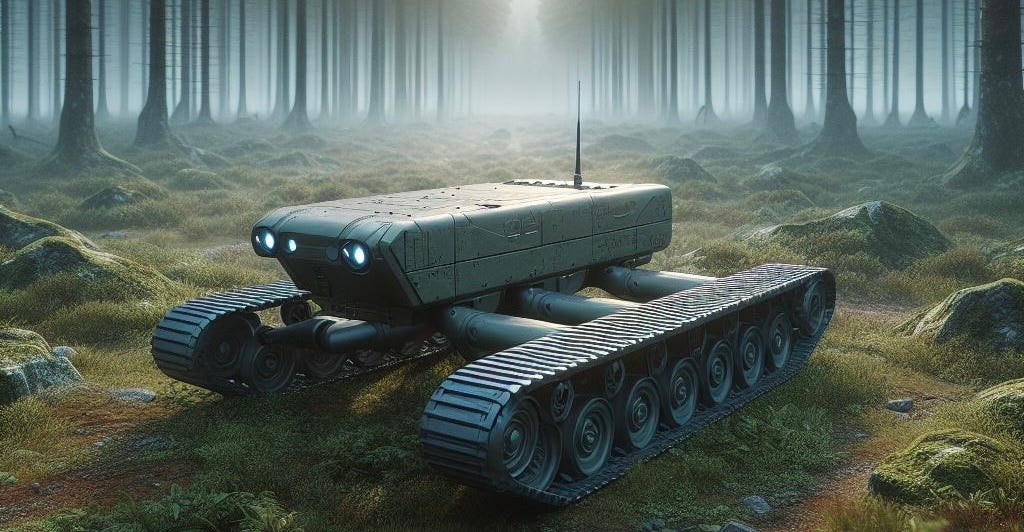Rise of the Uncrewed Ground Machines
Ukraine is a Massive Battle Lab for Accelerating Uncrewed Ground Combat Systems
Recently, there have been reports from Ukraine about increasing deployments of uncrewed ground vehicles by the Ukrainian Armed Forces as well as by the Russian invasion force. For a long time, autonomous, semi-autonomous and remotely operated vehicles in the ground environment have lagged deployments in the aerial and maritime environments.
From the first day of the war, uncrewed aerial vehicles have been employed in a wide array of missions by the Ukrainians and Russians. They have also been used by NATO countries in monitoring the conflict.
The Ukrainian navy appears to have mastered the development and deployment of multiple generations of uncrewed maritime strike systems. A range of small boats and semi-submersibles have been employed to strike Russian naval vessels in the Black Sea, forcing the Russians to restrict their operations in the western parts of that body of water. This has pushed missile-launching vessels further from the Ukrainian coastline and opened up a maritime trade route for the export of Ukrainian agricultural commodities.
But until recently, uncrewed ground systems in Ukraine have been few and far between. There are a range of reasons for this. First, autonomous and even remotely operated vehicles have difficulties with navigation and crossing many forms of terrain. It is one of the major obstacles to widespread use of uncrewed ground systems. Second, the ground environment normally has a higher density of military forces than the air or sea. Deconfliction is an issue. Third, ground systems also need larger amounts of on-board power than those in the other environments because of the need to travel across bumpy, vegetated terrain at slow speeds. Power and recharging ground systems in the tactical environment can be a problem. Finally, trust by humans in these systems is a challenge, particularly for lethal uncrewed ground systems.
Many commercial entities have been working on solutions to these challenges for some time. But perhaps the greatest contemporary driver is that both sides are seeking solutions to a more transparent and much more lethal ground combat environment. The lower signature, potential mass and greater expendability, of these systems makes them very attractive in the mass casualty environment of the Ukrainian front line.
This means things are starting to change for uncrewed ground systems in Ukraine. And once we start seeing them proliferate, there is likely to be a rapid learning curve and quick development of successive generations of uncrewed ground systems.
Keep reading with a 7-day free trial
Subscribe to Futura Doctrina to keep reading this post and get 7 days of free access to the full post archives.




